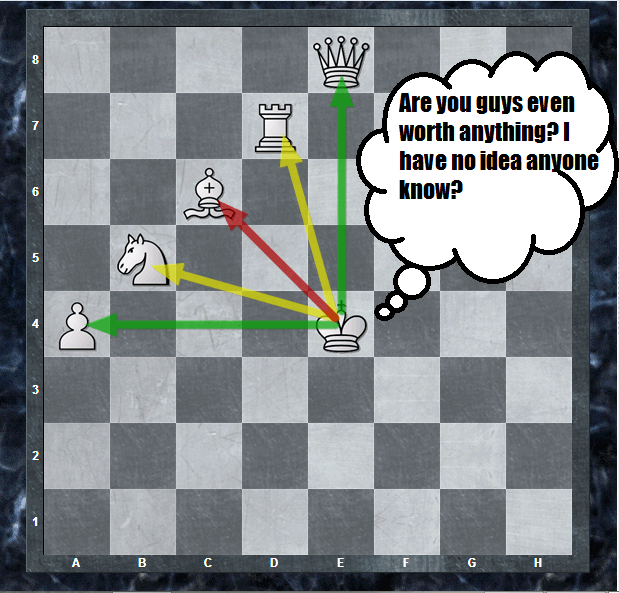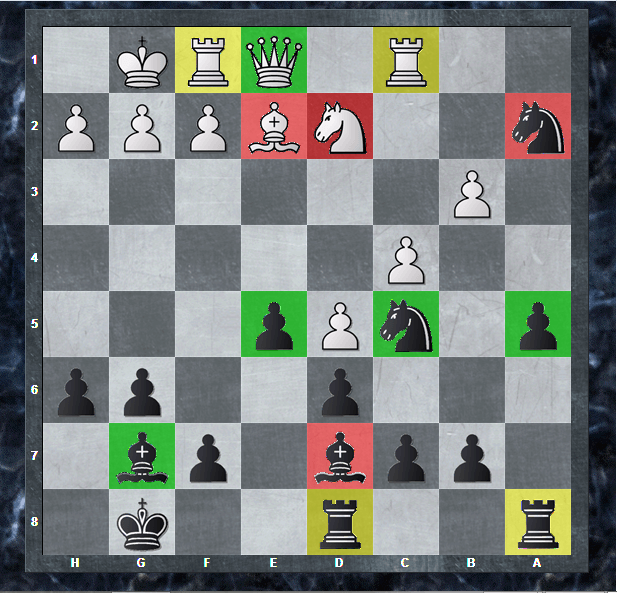
Chess Piece Relative Value

Queen? Rook? Bishop? Knight? Pawn?
How much are they worth?
If you are a beginner/new to chess do not fear. Today, You will be equipped with the knowledge of how much each piece is valued at.
Piece Value's
Queen = 9 points
Rook = 5 points
Bishop = 3 points
Knight = 3 points
Pawn = 1 points
In Chess each piece is given a number to what it is believed to be their best estimated value.
These mathematical values help determine who might be winning or who might be losing in a game. Which is very helpful. The only problem with this numerical number approach in chess is. Chess is very complex. Which in some positions even if their is huge material point advantage on one side. The side with the point advantage may not be able to win or make use of such an advantage causing the position to be unclear.
Even though the chess community has given mathematical number values to each piece. It is not always that simple. For many reasons I will be labeling some of the reasons why the mathematical number value is given as an exception in some positions. Mainly the ones labeled below in green.
The Material Rule Exception's
- Closed positions
- Fortress type positions
- Mating Sacrifices
- Forced Perpetual Checks
One example to show why these are given as the exception's is when a person finds themselves in a Closed Position.
In the above example white is mathmatically better.
White has 1 queen + 2 rooks + 8 pawns = 27 points total value
Black has 2 knight + 8 pawns = 14 points total value
However, the position will be a draw. The reason why is becuase white will never be able to break through the closed pawn position. Which will mean no progress will be made to help white acquire a victory from his point advantage.
In chess their is a Rule which use to be called the 50 move draw Rule. If a Capture or Pawn move has not been made in 50 moves the game will be considered a draw becuase no progress could be made.
In those situations the Mathmatical value of the material on the board does not matter because no progress can be made of the position.
Other factors:
If the material point advantage as a difference of 1 then the position becomes unclear. Example below
1 rook + 1 bishop = 8 points vs 1 queen = 9 points
Mathmatically 9 points is better than 8 points. However, if we was to subtract 9 - 8 the result answer will be 1.
Which would mean depending on the position in the game either side has a very good chance of winning.
The side with the higher material point value will be slightly favored to win becuase they are 1 point ahead lol. The down side is even though they will be favored the reality is the position as a difference of only 1 point which in practical terms would mean the position is unclear. The player behind by 1 may be skillful/resourceful enough to win or draw the position with out getting the defeat. Making the position unclear and very complex.
Other examples which offer unclear position's.
2 bishop + 1 knight = 9 points vs 1 queen + 1 pawn = 10 points
2 rooks = 10 points vs 1 queen = 9 points
Hopefully with this new knowledge and understanding it will help you to see why sometimes Grand Masters do queen/rook sacrifices in position's than end up winning.
To close out I would love to show you a very nice Immortal Queen Sacrifice Grand Master game.
After lol watching this game I will admit I fell in love with this opening line Garry Kasparov played.
It is one of my favorite chess Grand Master games which demonstrates the power of point material values.
The below diagram is the game which was played. I even highlighted were the critical move was found that saved the position for white years later. This game was played in Munich (Germany) 1994.
Their are also very wonderful youtube video's of this game which are very helpful(shown below). The game was really inspirational.
It demonstrates the power of material point values better than any other game I have ever seen.
Notice the initial start of the combination played in the position.

If you add all of the Pawns + Yellow highlighted squares + Red highlighted square the total will be
2 Rook + 1 Bishop + 1 Knight + 7 Pawns
(10) + (3) + (3) + (7) = 23
23 for white and black.
However, if you notice the Green highlighted squares you will notice.
For White - 1 Queen = 9
For Black - 1 Knight + 1 Pawn + 1 Bishop = 7
Whites total value 23+9 = 32
Black total value 23+7 = 30
Difference: 32-30 = 2
Difference of 2.
Now compare the difference to the Material Rule of Exception's.
The Material Rule Exception's
- Closed positions
- Fortress type positions
- Mating Sacrifices
- Forced Perpetual Checks
Is the above position in the picture I showed 1 of the exceptions?
Is position closed? No
Is it a Fortress position? No
Is it a Mating Sacrifice? No Kings are safe
Is their perpetual Checks? No
If the position is not part of the exception and it has a difference of over 1. One side is winning. That side in this position is White.
Notice what happen after the mistake. A mistake mind you that is very hard to spot. It took people years later to find the saving move.

Now count the Material Point Value's.
For White -
6 Pawns + 1 Knight + 1 Bishop + 2 Rook + 1 Queen
(6) + (3) + (3) + (10) + (9) = 31
For Black -
8 Pawns + 2 Knights + 2 Bishop + 2 Rook
(8) + (6) + (6) + (10) = 30
Whites total value = 31
Black total value = 30
Difference: 31-30 = 1
Difference of 1.
Which means???? That's right you guessed it. The position is UNCLEAR.
HA HA HA Wooooooo Hoooooo

Either side has the chance to Win/Draw/Lose in a Unclear position!
